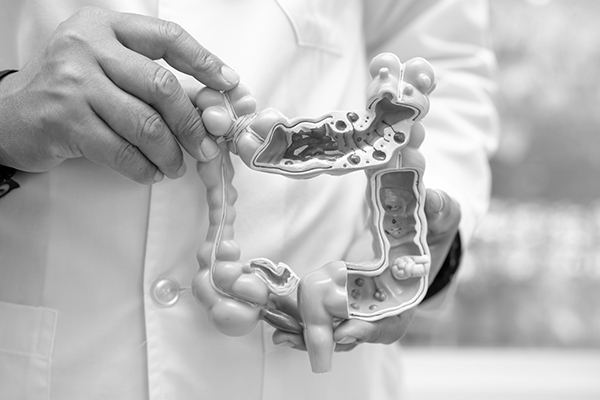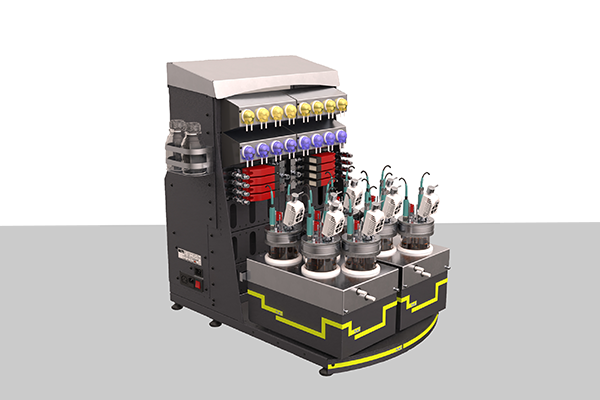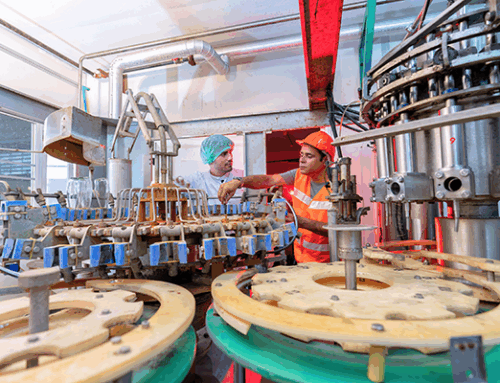The sheer amount of microorganisms in our bodies (in the order of one microbial cell to human cells) can only mean one thing: they have massive impacts on our day-to-day lives. As a result, in the last 15 years, there has been a boom in research to understand the role of our associates. This research has provided fascinating insights into what microorganisms inhabit our gastrointestinal tract, their effect on our health and disease, and the intimate relationship between the human host and the microbial guests.
However, this research has also highlighted that the gut microbiome (GM) hugely varies between individuals and based on their health status and diet, making data comparison incredibly difficult. While in vivo analysis is always the preferred way to understand the science behind GM, in many cases, this is not viable. It is costly and time and resource-consuming. In vitro simulation poses a powerful alternative to gaining insight into the exciting world of the human microbiome. There has been a concerted effort to try to standardize methodologies to guarantee its reproducibility.
Take a look at our 5 top tips for recreating the digestive process using bioreactors.
1. Choosing the right system and simulation
In previous blog posts, we have described how broad the differences are in the conditions in the gastrointestinal tract. All these parameters need to be accounted for, from the low pH of the stomach to the lack of oxygen in the colon. Recreating this in a single reactor is a tantalizing, almost unachievable task. However, multi-reactor systems offer a unique possibility. The ability to control the vessels individually means that the physicochemical conditions inside can be modified, enabling the possibility of recreating the different parts of the GI. Vessels can be connected using tubing. By using peristaltic pumps, the content can be transported between bioreactors, recreating processes of emptying and filling and avoiding potential contamination.
Another variable to evaluate when designing the experiment is static vs semi-dynamic models. Whereas the first one is more cost-effective and straightforward, they can oversimplify the systems. Semi-dynamic simulations help recreate more relevant conditions, especially the gastric phase, accounting for gradual acidification and fluid dynamics.
2. Implement standardized digestion simulation protocols
The diversity in digestion models and parameters can result in challenges when comparing results across studies. Collaborative frameworks, such as INFOGEST, have promoted the creation of simulation protocols that aim to recreate realistic scenarios informed by research results and increase the reproducibility of experiments. These protocols provide structured approaches to simulating oral, gastric, and intestinal digestion phases utilizing specific substrate ratios to digestive fluids. Enzyme activity (the rate at which the enzyme added transforms substrate or generates product) is another fundamental parameter to control. The recommended values should be provided in standardized protocols. This is particularly critical in the case of certain enzymes, such as tripsine.
3. Control environmental parameters
Bioreactors are designed to provide ideal conditions for microbial cultures. This is achieved by a combination of probes that can measure conditions. Simultaneously, automation systems can read these live measurements, and then the value diverts from the desired conditions, and a correcting measure can be applied. These corrections can take many forms. For example, pH can be regulated using acid or base solution or injecting gas such as CO2.
An in-depth understanding of the simulated conditions is essential to ensure that the process is an accurate representation. Physicochemical parameters include pH, temperature, and dissolved oxygen. Some other peculiarities of the GI need to be included, such as the addition of certain simulated fluids, such as saliva, gastric acid, and bile salts. This also includes using representative enzymes, such as pepsin and lipases, added at precise times.
4. Choose the right biological agents
Biological agents, such as microbial communities, enzymes, and artificial fluids, used in the simulation will shape the experiment’s results. Starting with the microbial inoculum, it is crucial to understand that synthetic communities are more straightforward to manage and will generate more consistent results. Nevertheless, it is well established that the microbial diversity between individuals varies. However, the functions that the different taxa play seem to be conserved. For this reason, natural microbial communities are more representative when studying the complexity of the human GM.

Enzymatic mixes will be used throughout the simulation at different points. For example, amylases, proteases, or lipases will be added to different reactions, replicating what happens in each compartment of the GI tract. Different organisms, from bacteria to mammals, will produce enzymes to aid digestion. However, not all of them will have the activity or will react equally to the same physicochemical conditions. It is for this reason that human-derived are the best. However, in many cases, they are not available or viable due to costs, so relevant information should be used, with porcine and bovine being the closest runner-ups.
5. Incorporate realistic physical conditions
We have discussed the need to keep the temperature under control in the systems, being one of the most critical parameters for life. However, other physical factors need to be replicated, too. The human body is quite effective at mixing the contents that go through the digestive system. For example, in the oral cavity, chewing ensures that the solid contents entering the body are shredded and reduced to small pieces, providing a higher surface area. While traveling down the GI, the peristaltic movements of the smooth muscle also increase the mixing of the food bolus.
To ensure that the conditions in the vessel are similar to the ones find the GI, reactors need to be equipped with means, like stirrers, to ensure that these are reproduced. Additionally, peristaltic muscle contractions push the bolus down the digestive system. Using peristaltic pumps to transfer the content of bioreactors during the simulation is a fantastic way to replicate this process.
Science in the Golden Age of the Gut Microbiome

We are living through the golden age of gut microbiome research. The advances in simulating the gastrointestinal tract can help us elucidate the complex microbial ecosystems within our bodies and the profound effects on our health, disease, and behavior. However, more controlled studies are necessary to obtain reproducible and reliable data. Here, we have presented our top 5 tips for recreating the gastrointestinal tract in vitro. We aim to empower researchers, clinicians, and enthusiasts alike to propel them to the forefront of this exciting field.
The golden age of microbiome research extends beyond scientific discovery. It is also about applying these discoveries to human health. We hope that our top tips will serve as valuable tools for our readers, enabling them to add their contributions to this field of study. As we continue to explore and understand the role of the microorganisms associated with us in health and diseases, we hope that the knowledge and methodology shared help on this journey towards a healthier future for everyone.







